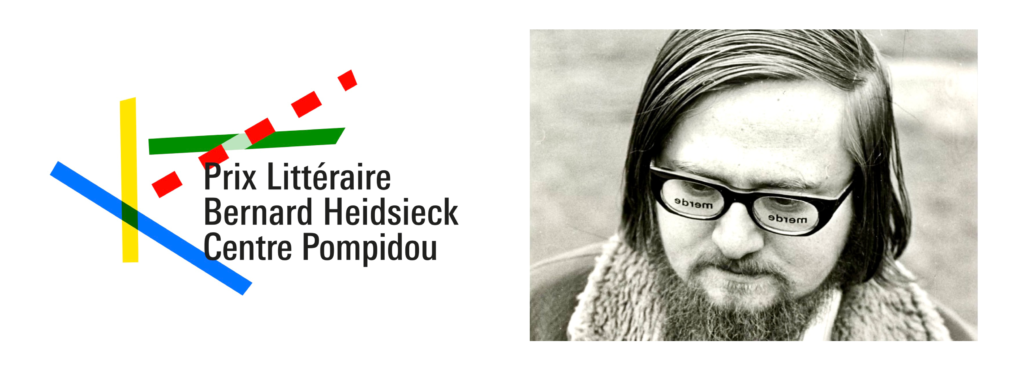Jiří Valoch
We are very pleased to announce that JIŘÍ VALOCH received the Bernard Heidsieck - Centre Pompidou Lifetime Achievement Award this year.

Jiří Valoch, despite his very young age, has been a creator and active protagonist of the international movement of visual and concrete poetry since the mid-1960s. He used the typewriter and its most elementary features to create typograms and optical poems. For Valoch, contact with visual art, especially its intermedial, conceptual and dematerialized forms, became fundamental. His work, as well as his theoretical and curatorial activities, expanded in this direction.
In a time of a divided world, Jiří Valoch created a nodal point of communication in Brno, where the current impulses of the neo-avant-garde network intersected.
Jana Pisaříková, Ondřej Chrobák
PRESS RELEASE [PDF]
Poète visuel tchèque, Jiří Valoch lauréat du prix Bernard Heidsieck du Centre Pompidou [ PRESS ARTICLE]
Le prix Bernard Heidsieck à Jiří Valoch [ PRESS ARTICLE ]
Vždy byl známější v zahraničí. Centre Pompidou ocenilo brněnského umělce Valocha [ PRESS ARTICLE ]
Jiří Valoch receives the Bernard Heidsieck Prize 2023 [ PRESS ARTICLE ]
Jiří Valoch (1946, Brno, Czechoslovakia, lives in Ludikov, Moravian Kars) is an artist, curator, collector and one of the most important donators in the czech contemporary art history.
He graduated in Czech and German studies and aesthetics from the Faculty of Philosophy at the Masaryk University in Brno (1965-1970), with a thesis on the development and typology of visual and sound poetry. In 1964, he started out his visual poetry with creation of non-semantic and purely visual aesthetic structures, returning to semantic meaning starting from 1970, nevertheless with extreme reduction of word content. Since the late 1960s, he complemented the medium of typewriting with new forms of expression – sparsely used drawings, artists' books and photography. At the beginning of the 1970s, he produced intimate photo-pieces, worked with textual interventions in negative and positive photographic film reels. In 1970, he also realized collective land art realizations. He left photography as a medium in 1975, the year he also published his first monograph Poesia Visiva (in the Beniamino Carucci publishing house in Rome).By the end of the 1960s Valoch got closely engaged with conceptual art. He took part in the Fluxus movement, was in close contact with the authors of the Italian Poesia Visiva movement, participated in the events of the cultural radical platform CAYC (director: Jorge Glusberg, Argentina). In 1968, he held the exhibition Computer Graphic, the fifth presentation of computer art in the world and the first in Eastern Europe. The same year he participated in the New Tendencies movement in Zagreb. In 1974, he participated as a curator in realization of the unofficial one-day exhibition The White Space in the White Space (authors: Stano Filko, Miloš Laky, Ján Zavarský). From 1968-1972 he was a member of the Klub konkretistů (Concretists' Club). Among his salient curatorial efforts are the exhibitions of Stanislav Kolíbal, Eva Kmentová, Karel Malich, or Milan Knížák which he was able to organize during the political thawing of the 1980s in the Brno House of Arts. From 2002, he has been working as an independent curator, following the work of the then youngest generation of artists in the field of post-conceptual art and geometric abstraction.
In 2002 he donated a large part of his collection to the National Gallery ( 4,000 works of art), and in 2014-2017 he handed over his archive and collection to the Moravian Gallery in Brno (estimated size of the collection is 15,000 items). The donation to the Moravian Gallery in Brno and the creation of the permanent exhibition ART IS HERE: New Art after 1945 contributed significantly to the establishment of conceptualism and new forms of art in the context of Czech museum and gallery institutions.